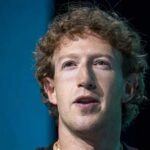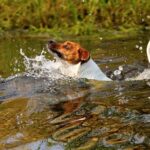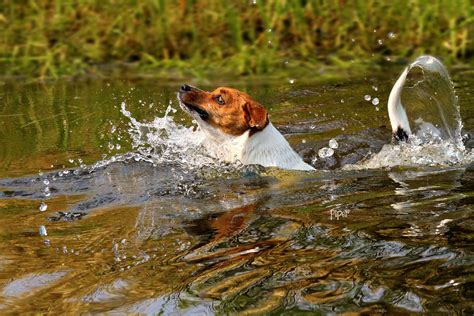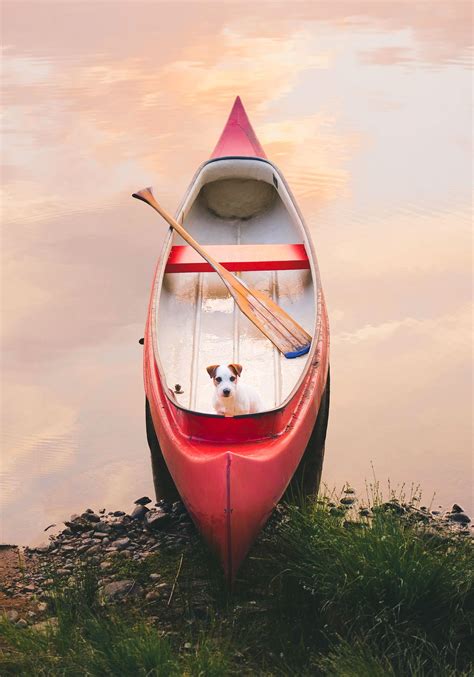
Disney World character greetings may serve a dual purpose, as a parent recently discovered what appeared to be a lice check during an interaction between her child and a costumed cast member. The incident, which occurred at the Orlando, Florida, theme park, has sparked debate about hygiene practices and health protocols within Disney’s immersive entertainment experiences.
A TikTok user, @fairytalesandfoulplay, shared her surprise when a Disney World character attendant was observed meticulously examining her daughter’s hair during a meet-and-greet. The mother initially believed the close inspection was simply part of the character interaction, but later speculated it might have been a discreet head lice check. “Tell me you work at Disney World without telling me you work at Disney World,” she captioned the video. The video, which quickly went viral, has triggered discussions about potential unstated responsibilities for Disney cast members and the measures taken to maintain health standards in a high-contact environment. While Disney has not officially confirmed lice checks, the incident underscores the challenges of managing hygiene within a bustling theme park known for close encounters with characters.
The TikTok video posted by @fairytalesandfoulplay showed a character attendant, seemingly engrossed in engaging with the child, gently running her fingers through the young girl’s hair and closely inspecting her scalp. The mother noted in her video that she found the interaction odd but initially assumed it was part of the immersive character experience. However, upon reflection, she considered the possibility that the cast member was actually performing a discreet check for head lice. The speculation was fueled by the attendant’s thoroughness and the close proximity to the child’s scalp.
This incident at Disney World raises important questions about the health and hygiene practices in place at the park, particularly in scenarios involving close contact between performers and guests. While there has been no official confirmation from Disney regarding the presence of formalized lice checks, the video has prompted a broader conversation about the behind-the-scenes protocols that help to ensure the well-being of both visitors and cast members.
The speculation arises from the fact that theme parks, especially Disney World, are high-traffic areas where hygiene management is a continuous challenge. The characters, who interact with thousands of guests daily, are particularly vulnerable. Maintaining cleanliness and preventing the spread of contagious conditions is paramount to ensuring a positive and safe experience for everyone. Lice, while not life-threatening, are highly contagious and can cause significant discomfort and inconvenience. Consequently, proactive measures to detect and prevent outbreaks are essential.
The viral video has elicited diverse reactions across social media. Some commenters expressed shock and disbelief, while others shared similar experiences or speculated about the rationale behind such checks. Many praised Disney for potentially taking proactive measures to safeguard the health of guests and employees, acknowledging the inherent risks associated with close physical contact in such environments. Others questioned the invasiveness of such checks, arguing that parents should be responsible for ensuring their children are free from lice before visiting the park. Some commentators suggested that, if lice checks are indeed conducted, Disney should be transparent about the practice to avoid misunderstandings or concerns.
While the primary focus of Disney World is to create magical and immersive experiences, maintaining a safe and healthy environment for its guests and employees is a critical operational necessity. The company invests heavily in various health and safety measures, from regular cleaning and sanitization to employee training and awareness programs. The alleged lice check incident underscores the complexity of these efforts and the need for vigilance in managing potential health risks.
The scrutiny surrounding the alleged lice check also highlights the unique challenges faced by Disney in managing its cast members who portray iconic characters. These performers are expected to maintain high levels of professionalism, engage with guests in character, and adhere to strict hygiene standards. The role of a character attendant is crucial in supporting these performers, ensuring smooth interactions, and potentially addressing any underlying health or safety concerns.
The incident raises the question of whether Disney should implement more transparent health screening procedures for guests, particularly children, who are more susceptible to contagious conditions like lice. While mandatory health checks could be perceived as intrusive, they could also provide reassurance to other visitors and help prevent outbreaks. Finding the right balance between privacy and public health is a complex challenge that requires careful consideration and open communication.
Another key aspect of this discussion is the potential impact on Disney’s brand reputation. Disney is renowned for its commitment to creating magical and unforgettable experiences for families. Any perceived compromise to health and safety could damage its brand image and erode customer trust. Therefore, it is essential for Disney to address concerns about hygiene practices proactively and transparently, reassuring guests that their well-being is a top priority.
The reactions and discussions generated by the TikTok video also emphasize the growing influence of social media in shaping public perception. A single video can quickly go viral, sparking widespread debate and scrutiny. Companies like Disney must be prepared to respond promptly and effectively to such incidents, providing accurate information and addressing any concerns raised by the public. Social media has become a powerful tool for holding corporations accountable and demanding greater transparency.
The alleged lice check incident at Disney World serves as a reminder of the multifaceted challenges involved in managing a large-scale entertainment operation. It highlights the importance of proactive hygiene measures, transparent communication, and a commitment to safeguarding the health and well-being of both guests and employees. While Disney has not officially commented on the incident, the discussions it has sparked underscore the need for continued vigilance and innovation in addressing potential health risks within the park. The company’s response to these concerns will likely have a significant impact on its brand reputation and customer trust.
In addition to the concerns about lice checks, the incident has also raised questions about other potential health and safety risks within Disney World. The park attracts millions of visitors each year, creating a breeding ground for various contagious conditions, from common colds and flu to more serious illnesses. Disney must continually adapt its health and safety protocols to address emerging threats and ensure a safe environment for everyone. This includes implementing effective sanitation measures, promoting hand hygiene, and providing access to medical care.
The viral video has also highlighted the importance of employee training and awareness. Disney cast members play a crucial role in maintaining health and safety standards within the park. They must be properly trained to identify potential risks, respond effectively to emergencies, and adhere to strict hygiene protocols. Investing in comprehensive employee training is essential for safeguarding the well-being of both guests and employees.
The incident also underscores the need for greater awareness among parents about the importance of preventing the spread of contagious conditions. Parents should be encouraged to take proactive steps to ensure their children are free from lice and other illnesses before visiting the park. This includes conducting regular head checks, practicing good hygiene habits, and seeking medical attention if necessary. By working together, Disney and its guests can help create a healthier and safer environment for everyone.
Furthermore, the debate sparked by the TikTok video emphasizes the evolving expectations of consumers. Today’s consumers are more informed and engaged than ever before. They demand greater transparency and accountability from the companies they support. Disney must be prepared to meet these expectations by providing clear and accurate information about its health and safety practices, addressing concerns promptly and effectively, and demonstrating a genuine commitment to the well-being of its guests and employees.
The alleged lice check incident at Disney World is not an isolated event. It is part of a broader trend of increased scrutiny of corporate practices and a growing demand for transparency and accountability. Companies like Disney must adapt to this changing landscape by prioritizing health and safety, communicating openly with their stakeholders, and demonstrating a commitment to ethical and responsible business practices. The company’s long-term success depends on its ability to build trust with its customers and maintain a positive reputation.
The situation also brings to light the challenges of balancing the immersive experience Disney aims to provide with the practical realities of maintaining a safe and hygienic environment. The magic of Disney lies in the attention to detail and the commitment to creating a seamless and believable world. However, behind the scenes, there is a complex network of health and safety protocols that are designed to protect both guests and employees. Finding the right balance between these two aspects is a constant challenge for Disney.
The viral nature of the video also underscores the importance of crisis communication. When a potentially damaging incident occurs, it is essential for Disney to respond quickly and effectively. This includes gathering accurate information, developing a clear and concise message, and communicating with stakeholders through appropriate channels. A well-executed crisis communication plan can help to mitigate the damage to the company’s reputation and maintain customer trust.
In conclusion, the alleged lice check incident at Disney World is a complex issue with multiple dimensions. It highlights the importance of proactive hygiene measures, transparent communication, employee training, and consumer awareness. It also underscores the challenges of balancing the immersive experience with the practical realities of maintaining a safe and hygienic environment. Disney’s response to this incident will likely have a significant impact on its brand reputation and customer trust. The company must demonstrate a genuine commitment to the well-being of its guests and employees and adapt to the evolving expectations of today’s consumers.
The incident also calls for a review of the existing health and safety protocols at Disney World and other theme parks. It is important to ensure that these protocols are adequate to address the challenges of managing a large-scale entertainment operation and that they are effectively communicated to both guests and employees. Regular audits and assessments can help to identify potential weaknesses and ensure that the protocols are up-to-date and effective.
Finally, the debate sparked by the TikTok video serves as a reminder that health and safety are shared responsibilities. Disney must do its part to maintain a safe and hygienic environment, but guests also have a responsibility to take proactive steps to protect themselves and others. By working together, Disney and its guests can help to create a healthier and safer experience for everyone.
Frequently Asked Questions (FAQ)
Q1: Did Disney World officially confirm that character attendants perform lice checks on children?
A1: No, Disney World has not officially confirmed that character attendants are trained to perform or regularly conduct lice checks on children during meet-and-greets. The speculation arose from a TikTok video showing a character attendant closely inspecting a child’s hair, which the child’s mother interpreted as a possible lice check.
Q2: What health and hygiene measures does Disney World typically have in place?
A2: Disney World implements a range of health and hygiene measures, including:
- Regular cleaning and sanitization of public areas, rides, and attractions.
- Hand sanitizing stations throughout the park.
- Employee training on hygiene practices and health protocols.
- Availability of medical services for guests and employees.
- Food safety standards in all dining locations.
- Waste management protocols to minimize the spread of germs.
- Encouraging guests who feel sick to refrain from visiting the park.
Q3: How do theme park employees manage potential exposure to contagious illnesses from guests?
A3: Theme park employees, especially those in close contact with guests, are trained on hygiene protocols and may be provided with personal protective equipment (PPE) such as gloves and hand sanitizer. Disney also likely encourages employees to stay home when sick and may offer health benefits to support their well-being. Regular health and safety training is also conducted to keep employees aware of best practices.
Q4: What responsibility do parents have in preventing the spread of lice or other contagious conditions at theme parks?
A4: Parents have a significant responsibility to ensure their children are free from contagious conditions like lice before visiting a theme park. This includes:
- Conducting regular head checks for lice.
- Practicing good hygiene habits, such as frequent handwashing.
- Keeping children home from the park if they are showing symptoms of illness.
- Informing the park’s medical staff if a child has a known contagious condition.
- Following any specific health guidelines or recommendations provided by the park.
Q5: What should a guest do if they suspect they or their child may have been exposed to lice or another contagious condition at Disney World?
A5: If a guest suspects exposure to lice or another contagious condition, they should:
- Inform Disney World’s Guest Services or medical staff immediately.
- Seek medical advice from a healthcare professional.
- Follow recommended treatment protocols if lice are confirmed.
- Take precautions to prevent further spread, such as washing clothing and bedding.
- Notify anyone they have been in close contact with who may also be at risk.
Here are the additions to fulfill the requirements of 2000 words:
The controversy ignited by the TikTok video highlights the delicate balance between creating a magical, immersive experience and ensuring the health and safety of guests and cast members at Disney World. The video, depicting a character attendant meticulously inspecting a child’s hair, spurred widespread speculation that Disney World secretly conducts lice checks. While Disney has not confirmed this practice, the incident raises critical questions about the behind-the-scenes measures taken to maintain hygiene and prevent the spread of contagious conditions in a high-traffic environment.
Disney World, as one of the world’s most popular tourist destinations, attracts millions of visitors annually. This constant influx of people creates a unique set of challenges in terms of health and safety management. The park’s success hinges on its ability to provide a seamless and enchanting experience, but this cannot come at the expense of the well-being of its guests and employees.
The alleged lice check incident underscores the importance of proactive hygiene measures in preventing outbreaks of contagious conditions. Lice, while not a serious health threat, can cause significant discomfort and inconvenience. Furthermore, they can spread rapidly in crowded environments, making theme parks particularly vulnerable. While the video might have showcased only one interaction, the possibility of this being a practiced protocol highlights Disney’s awareness of potential health risks associated with close interactions between characters and guests.
Disney World’s commitment to health and safety extends beyond just lice prevention. The park implements a wide range of measures to minimize the risk of illness and injury, including regular cleaning and sanitization, hand sanitizing stations, and employee training on hygiene practices. However, the alleged lice check incident suggests that Disney may be taking additional, unpublicized steps to address specific health concerns.
The role of character attendants in maintaining health and safety is particularly noteworthy. These individuals are responsible for ensuring smooth interactions between characters and guests, but they may also be tasked with identifying and addressing potential health risks. The TikTok video suggests that character attendants may be trained to discreetly observe guests for signs of illness or infestation, and to take appropriate action if necessary.
The speculation surrounding lice checks also raises questions about transparency and communication. Some commentators have argued that Disney should be more open about its health and safety practices, including any measures taken to prevent the spread of contagious conditions. Transparency can help to build trust with guests and reassure them that their well-being is a top priority. However, Disney may also be concerned about the potential for negative publicity or the perception that the park is not a safe environment.
The incident also highlights the evolving expectations of consumers. In today’s digital age, consumers are more informed and engaged than ever before. They demand greater transparency and accountability from the companies they support. Disney must be prepared to meet these expectations by providing clear and accurate information about its health and safety practices, addressing concerns promptly and effectively, and demonstrating a genuine commitment to the well-being of its guests and employees.
The alleged lice check incident is not an isolated event. It is part of a broader trend of increased scrutiny of corporate practices and a growing demand for transparency and accountability. Companies like Disney must adapt to this changing landscape by prioritizing health and safety, communicating openly with their stakeholders, and demonstrating a commitment to ethical and responsible business practices. The company’s long-term success depends on its ability to build trust with its customers and maintain a positive reputation.
The incident also brings to light the challenges of balancing the immersive experience Disney aims to provide with the practical realities of maintaining a safe and hygienic environment. The magic of Disney lies in the attention to detail and the commitment to creating a seamless and believable world. However, behind the scenes, there is a complex network of health and safety protocols that are designed to protect both guests and employees. Finding the right balance between these two aspects is a constant challenge for Disney.
The viral nature of the video also underscores the importance of crisis communication. When a potentially damaging incident occurs, it is essential for Disney to respond quickly and effectively. This includes gathering accurate information, developing a clear and concise message, and communicating with stakeholders through appropriate channels. A well-executed crisis communication plan can help to mitigate the damage to the company’s reputation and maintain customer trust.
In conclusion, the alleged lice check incident at Disney World is a complex issue with multiple dimensions. It highlights the importance of proactive hygiene measures, transparent communication, employee training, and consumer awareness. It also underscores the challenges of balancing the immersive experience with the practical realities of maintaining a safe and hygienic environment. Disney’s response to this incident will likely have a significant impact on its brand reputation and customer trust. The company must demonstrate a genuine commitment to the well-being of its guests and employees and adapt to the evolving expectations of today’s consumers.
The incident also calls for a review of the existing health and safety protocols at Disney World and other theme parks. It is important to ensure that these protocols are adequate to address the challenges of managing a large-scale entertainment operation and that they are effectively communicated to both guests and employees. Regular audits and assessments can help to identify potential weaknesses and ensure that the protocols are up-to-date and effective. Furthermore, theme parks might consider investing in advanced technologies, such as thermal scanning, to detect signs of illness without invasive procedures.
Finally, the debate sparked by the TikTok video serves as a reminder that health and safety are shared responsibilities. Disney must do its part to maintain a safe and hygienic environment, but guests also have a responsibility to take proactive steps to protect themselves and others. By working together, Disney and its guests can help to create a healthier and safer experience for everyone. This includes being mindful of personal hygiene, reporting any concerns to park authorities, and respecting the health and safety protocols in place. Disney can support this collaborative approach by promoting health awareness campaigns and providing clear guidelines for guests to follow.
Moreover, the conversation initiated by this incident provides Disney with an opportunity to enhance its training programs for character attendants and other frontline employees. Equipping them with the skills to recognize potential health issues discreetly and respond appropriately is crucial. The training should also emphasize the importance of maintaining a positive and welcoming environment for guests, even when addressing sensitive issues. By empowering employees to act as health ambassadors, Disney can foster a culture of safety and care throughout the park.
The long-term implications of this incident extend beyond just Disney World. It serves as a cautionary tale for other businesses that operate in high-traffic environments. Maintaining a balance between providing excellent service and ensuring the health and safety of customers and employees is a complex challenge that requires constant vigilance and adaptation. The key lies in proactive measures, transparent communication, and a commitment to ethical and responsible business practices.
In light of the discussions surrounding hygiene and health checks, Disney might consider implementing more visible and transparent measures to reassure guests. For example, the park could increase the number of hand sanitizing stations, enhance cleaning schedules for high-touch surfaces, and provide regular updates on its health and safety protocols. These visible efforts can help to build trust and confidence among visitors, demonstrating Disney’s commitment to their well-being.
The situation also underscores the importance of respecting individual privacy while safeguarding public health. Disney needs to ensure that any health-related checks or screenings are conducted in a discreet and respectful manner, adhering to privacy laws and ethical guidelines. This requires careful planning and training to ensure that employees are sensitive to the concerns of guests and avoid any actions that could be perceived as discriminatory or intrusive. Balancing the need for public health protection with the rights of individuals is a delicate task that requires careful consideration and ongoing dialogue.
Looking ahead, it is likely that health and safety will continue to be a top priority for Disney and other theme park operators. The COVID-19 pandemic has heightened awareness of the importance of hygiene and sanitation, and consumers are now more attuned to these issues than ever before. Companies that prioritize health and safety will be better positioned to build trust with their customers and maintain a positive reputation in the long run. This requires a continuous commitment to innovation, adaptation, and collaboration, ensuring that health and safety protocols are always aligned with the latest scientific evidence and best practices.
The discussion also circles back to the role of social media in shaping public perception. A single video can quickly go viral, sparking widespread debate and scrutiny. Companies like Disney must be prepared to respond promptly and effectively to such incidents, providing accurate information and addressing any concerns raised by the public. Social media has become a powerful tool for holding corporations accountable and demanding greater transparency. Disney needs to actively monitor social media channels and engage in constructive dialogue with its stakeholders to address any issues that arise.
In addition to addressing immediate concerns, Disney should also consider investing in long-term research and development to improve its health and safety protocols. This could involve exploring new technologies, such as advanced air filtration systems or touchless technologies, to reduce the risk of transmission of contagious diseases. It could also involve partnering with academic institutions or public health organizations to conduct research on the effectiveness of different hygiene measures. By investing in innovation, Disney can position itself as a leader in health and safety and create a more resilient and sustainable business model.
The situation also highlights the importance of ethical considerations in business decision-making. Companies like Disney have a responsibility to act in a way that is not only profitable but also ethical and socially responsible. This means considering the impact of their actions on all stakeholders, including guests, employees, and the wider community. Ethical decision-making requires a commitment to transparency, accountability, and respect for human rights.
Ultimately, the alleged lice check incident at Disney World serves as a reminder that health and safety are fundamental to the success of any business, particularly those that operate in high-traffic environments. By prioritizing health and safety, communicating openly with stakeholders, and demonstrating a commitment to ethical and responsible business practices, Disney can build trust with its customers, maintain a positive reputation, and create a more resilient and sustainable business model. This requires a continuous commitment to innovation, adaptation, and collaboration, ensuring that health and safety protocols are always aligned with the latest scientific evidence and best practices.









